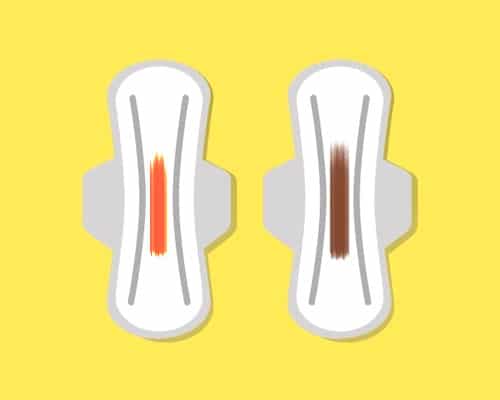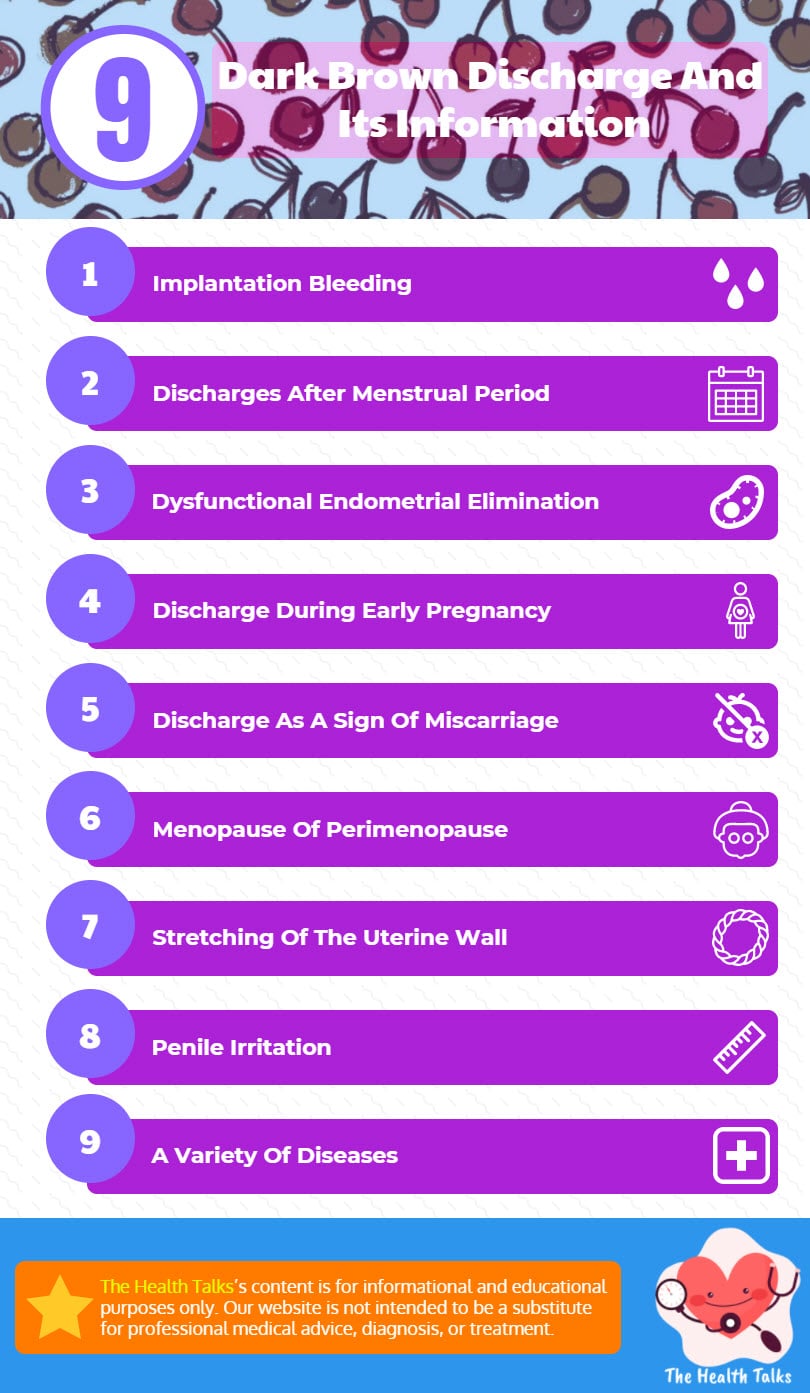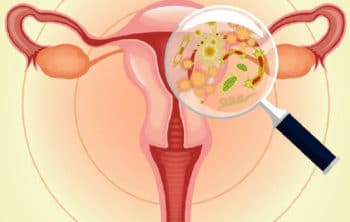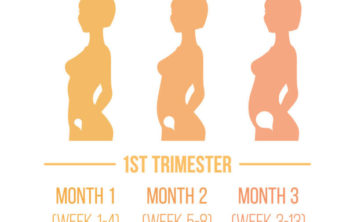Contents
Light and Dark Brown Vaginal Discharge: Causes, Symptoms
Light and Dark Brown Vaginal Discharge from the vagina does not necessarily have to be alarming. In most cases, these discharges are caused by natural causes, and will naturally go away on their own. If, on the other hand, you experience other additional symptoms along with you discharge, then it might be time to seek the attention of a medical professional. Visiting your doctor at the presence of a discharge is extremely essential during pregnancy, and it is highly advised that you do not delay.
Remember, vaginal discharges are common among women, but if you are developing other symptoms such as those mentioned above, it’s time to seek professional advice. Utilize the Internet for more information about discharges of other colors. Keep a calm mind for there’s a large chance that your discharges are nothing severe or alarming. Now you will know the meaning of Dark Brown Discharge or Light Brown Discharge below.
1. What Is Light Brown Vaginal Discharge?
Light brown discharge is produced if vaginal discharge is mixed with blood. Vaginal discharge starts once you hit puberty. Before getting your first period, it is normal to have this discharge for weeks, months or years. This discharge would also continue even after you get your period and would increase as ovulation draws near and when sexually aroused. Light brown discharge is usually caused by perimenopause, vaginal atrophy, uterine polyps and pregnancy.
1.1. Symptoms Of Light Brown Discharge:
Having a light brown discharge is one of the signs along with hot flashes, vaginal dryness, night sweats and insomnia that you are in your perimenopause period (transition period to menopause).
On the other hand, there is light brown discharge in vaginal atrophy because blood from uterus takes a lot of time to reach the outside of the vagina. On the contrary, light brown discharge is one of the symptoms of uterine polyps along with irregular menstrual bleeding and bleeding after the menopause.
Lastly, light brown discharge in pregnancy is caused by the implantation of the fertilized egg in the uterine lining. This type of brown discharge is not usually alarming, but it is advisable to seek medical attention as there might be other causes other than what were stated.
1.2. Causes Of Light Brown Discharge:
The light brown discharge is alarming as it can be treated with just changes in your diet and lifestyle. However, light brown discharge can also be serious.
Some causes of light brown discharge include endometrial bleeding, ovulation, pregnancy, sexually transmitted disease (such as genital warts, gonorrhea and Chlamydia), menopause, pelvic inflammatory disease and cervical cancer. It is common and normal to have light brown discharge in early pregnancy as it is usually one of the signs that you have conceived.
Normally, light brown discharge in early pregnancy takes place after conception and would last for 3-4 days. It is also possible to have light brown discharge between periods because there are instances during menstruation wherein blood fails to be taken away the vagina. Thus, this blood would exit the vagina as light brown discharge. There is also light brown discharge before period and this occurs because of menstrual flow breakthrough, polyps, contraceptive pills and implantation bleeding.
Finally, it is also possible to have light brown discharge after period due to the cleaning process of the uterus the older endometrial tissues exit the body as a light brown discharge to make room for newer endometrial tissues.
1.3. Light Brown Discharge Treatments:
As mentioned, having a light brown discharge does not indicate that serious medical conditions. However, they are still alarming to women because they are not deemed as normal. To women, normal discharge should either be only clear or red. Therefore, before panicking, it is advisable to consult a gynecologist about the matter in order to have a comprehensive understanding about brown discharge. Treatments to cure brown discharge also vary among women as there are various reasons why they are having light brown discharge.
Read more: Bloody Discharge: 11 Causes, Abnormal Bloody Discharge Treatment
2. What Is Dark Brown Vaginal Discharge?
Dark brown vaginal discharge from your vagina means anything serious? Vaginal discharge is a common occurrence among women, and it usually isn’t a matter of concern on most cases. However, dark brown vaginal discharge may also signal an urgent medical condition that needs professional attention.
A majority of women go through normal vaginal discharges throughout their menstrual cycle or even before, during, and after pregnancy. Cells in the vagina constantly produce fluids and bacteria in as much as a teaspoon a day. The normal discharge is usually transparent and odorless, while other less common discharges, however, range from brown, to yellow, or red.
Women must be able to distinguish between normal and abnormal vaginal discharges so they know when it’s time to seek medical attention. This article will talk about the occasional dark brown vaginal discharge some women go through, what it means, and things you may be able to do about it.
2.1 Dark Brown Discharge And Its Information:
1) Implantation Bleeding:
One of the most common causes of dark brown vaginal discharge is implantation bleeding. Implantation bleeding occurs when a fertilized egg attaches itself to the uterine wall. Implantation bleeding is also called implantation spotting. Right after the egg goes through ovulation; the egg will then travel through the uterus and digs itself into the linings. Implantation bleeding is often confused for a period, but at close inspection, looks absolutely nothing like it. There’s not much discharge in implantation bleeding, and discharges are usually dark brown or pink in color. Implantation bleeding usually occurs five weeks after the last menstrual cycle, so calculate how many days have passed before your last period.
2) Discharges After Menstrual Period:
Dark brown vaginal discharge is also very common a day or two after an entire menstrual cycle. Dark brown vaginal discharge is the body’s special way of making sure the vagina is clean by shedding out old blood that’s still inside. Dark brown discharge is usually not a symptom that causes unless, not unless other symptoms are present during the occurrence of the discharge.
3) Dysfunctional Endometrial Elimination:
Discharge of dark brown blood or spotting in the middle of the menstrual cycle may be a symptom of endometrial elimination. Endometrial elimination occurs when the menstrual period occurs a lot later than its usual time. Endometrial elimination can be very inconvenient, but apart from that, there should be no cause for alarm.
4) Discharge During Early Pregnancy:
In some cases during early pregnancy, dark brown vaginal discharge or spotting may occur during the time a period should be taking place. If this particular incident occurred after a woman has sex without contraceptives, the woman should take a pregnancy test in order to determine if dark brown vaginal discharge is indeed caused by early pregnancy.
5) Discharge As A Sign Of Miscarriage:
For some unfortunate women, dark brown vaginal discharge may be a symptom of miscarriage. If your discharge is accompanied by feelings of heavy cramping and heavy bleeding, you may have lost your baby. If, on the other hand, these symptoms are not present, there may be no cause for alarm. Any abnormal discharges during pregnancy should immediately be consulted with a medical professional.
6) Menopause Of Perimenopause:
When women inch closely into menopause, they begin to develop very irregular menstrual cycles. Once women have entered menopause, they will no longer go through the usual period, but they may experience brownish spotting or light bleeding. One particular condition during menopause that causes brown discharges is called atrophy. This particular condition occur when blood vessels located in the uterine lining weaken and burst spontaneously, causing blood to flow and spotting.
7) Stretching Of The Uterine Wall:
Women who are pregnant may develop dark brown vaginal discharge, but this doesn’t exactly mean that its miscarriage they’re facing. For some soon-to-be mothers, dark brown vaginal discharge occurs due to the stretching of the uterine wall. In some cases, the uterine wall you bleed as it stretches in order to accommodate the size of the growing child. When this happens, bleeding happens gradually. In some mothers, dark brown vaginal discharge is caused by the body spewing out old blood that was once used to protect the fetus. There is no use for this blood, so the body decides to throw it out.
8) Penile Irritation:
Sexually active women may develop dark brown vaginal discharge from the vagina due to penile irritation. In some cases, especially when the vagina is not lubricated enough for sex, the vaginal walls become irritated and become bruised, causing dark brown blood to spot from the vagina. Sex during pregnancy is also known to cause this.
9) A Variety Of Diseases:
Apart from natural causes, some dark brown discharge is caused by sexually transmitted diseases or STD. If you have not been practicing safe sex lately, then this might be the reason for your discharges. Brown discharges coupled with a variety of other symptoms such as pain, depression, an increase in urination, itching, rashes, burning, ulcers in the mouth, loss of appetite, and infertility may all be a sign of infection. A variety of diseases that cause these symptoms include PID or Pelvic Inflammatory Disease, cervical cancer, Chlamydia, vaginal warts, or gonorrhea.
2.2. Dark Brown Discharge In Early Pregnancy:
Dark brown discharge in early pregnancy means anything? Every incremental change in the body of mother-to-be strikes as something alarming, especially to the mothers who want to make sure that their babies are in tip-top shape. A woman’s body goes through a variety of changes during the course of pregnancy, some of which are completely normal, while others, not so much. One particular condition that some mothers tend to be very worried about is dark brown vaginal discharge during pregnancy. Dark brown vaginal discharge during pregnancy may, or may not be a normal occurrence, depending on the other factors that revolve around the incident. Here’s everything you need to know about dark brown discharge in early pregnancy.
Causes Dark Brown Discharge In Early Pregnancy:
1) Implantation Bleeding:
In order to fully understand the many causes of dark brown vaginal discharge during pregnancy, you need to understand the symptoms of the discharge itself. Determine the number of weeks that have passed before your last menstrual cycle. If you calculated it to be about five weeks, then there’s nothing to worry about. You’re simply going through the symptoms of implantation bleeding. Implantation bleeding occurs when the egg attaches to the uterine wall. The bleeding produced by implantation is usually brown of color.
2) Miscarriage:
Miscarriage is one thing that all mothers fear the most, but there’s no cause for alarm. As long as you’re not feeling any accompanying symptoms such as heavy bleeding and painful cramping, your dark brown discharge is highly unlikely to be a sign of miscarriage. If these symptoms are present, however, it may be time for you to visit your doctor. Keep calm and don’t panic.
3) A Viral Infection:
Sometimes, brown discharge from the vagina during pregnancy can be a sign of a viral infection. If the brown discharge is accompanies by pain, itching, or burning, you may be infected with a viral infection. In most cases, brown discharge from a viral infection during pregnancy is caused by the verruca virus, which you must at once consult with your doctor as soon as possible. The verruca virus is not a virus to be trifled with.
4) The Stretching Of The Uterus:
In some cases, dark brown vaginal discharges can be related to the stretching and the growth of the uterus. In order to accommodate a growing child, the surrounding tissues of the uterine wall expand and grow in shape. Bleeding is slow when this happens, and it is not usually a part of the blood flow so by the time it exits the body, it has lost oxygen and has already turned brown. Still, other cases of dark brown vaginal discharge are caused by old blood that was once used by the body to protect the fetus. Once there is no more use for the blood, the body throws the blood out.
5) Other Causes:
Other causes of dark brown vaginal discharge include ectopic pregnancy and penile irritation on the cervix. Ectopic pregnancy is a very dangerous condition that needs to be remedied at once. Penile irritation in the cervix is caused by having sexual intercourse during pregnancy. Analyze your body and your behavior in the past few days to determine what causes dark brown vaginal discharge in early pregnancy.
2.3. Dark Brown Discharge Before Period:
Dark Brown Discharge before Period is something to worry? Most women who experience a release of dark brown vaginal discharge before period will often dismiss such as part of their monthly cycle. This is basically something that they deem to be a sign that their menstrual cycle is due again. Some would even experience a light brown discharge, which most of the time, is often related to the dark brown release that occurs in between menstrual cycles.
While there is often the question that dark brown vaginal discharge before period would be a sign of abnormality related to a woman’s ovulation, one should look take such dark brown vaginal discharge between periods into consideration whether the need to look into one’s vaginal health should actually be worked upon. This will also provide a clearer perspective on such a mysterious condition and will actually provide one with answers on how to actually treat such without worrying or panicking.
1) Why Does It Happen?
During the menstrual cycle of a woman, ovulation occurs and then the egg is released. When this process happens, there is a lot of mucous that will be produced by the woman’s vagina. This will lead to a certain dark brown discharge before period, which should prompt a woman to get ready for their period.
Most of the time, it is the way that the woman’s vagina will work to clean itself of the remnants of their former menstrual cycle. Dark brown vaginal discharge before period makes for the vagina’s protection to ensure that the egg that will be produced will be clean enough to assimilate in case it gets fertilized. One should not worry much about dark brown vaginal discharge before period as it is a healthy process that the female body works to its protection.
2) Other Questions About Dark Brown Discharge:
You can then say that this phenomenon is basically a dark brown vaginal discharge after period, but it just depends on the way you look at it. Just take into consideration the time frame it was closest to when it occurred. Spotting is normally a sign of such, and would require one to take precaution by wearing panty liners so as to not soak their underwear with blood when it occurs.
Dark brown vaginal discharge before period makes for a sign that your reproductive system is healthy, but you must take good care to get a checkup if such a thing occurs during a time when you are not supposed to ovulate. Some cases would be dark brown vaginal discharge in early pregnancy, which also is a process where the excessive blood and mucous of the vagina is being cleansed out of the system to allow for the fertilized egg to have a clean home.
You should worry if the dark brown vaginal discharge before period would be yellow or green, as it is an indication of a yeast infection. Get consulted if such a thing occurs, so as to avoid such a condition from getting worse. Nothing to worry about Dark Brown Discharge before Period.
2.4. Dark Brown Discharge Between Periods:
Dark brown vaginal discharge between periods is commonly nothing to be concerned about. In most cases, Dark brown vaginal discharge between periods is just excess menstrual residue from the last cycle. In normal cases, the vagina usually produces transparent discharge, but it will also occasionally produce dark brown vaginal discharge between periods. There are a variety of factors that can cause a vagina to produce a brown to dark brown color. In normal cases, dark brown vaginal discharge between periods is painless.
1) Dark Brown Discharge Between Periods And Its Information:
One such factor that may cause the dark brown vaginal discharge after your period is the endometrial tissues that are lining the walls of your vagina. The uterine lining is the entrance and exit of the menstrual bleeding each month. There are times when the blood does not completely pass through the endometrial tissues, which is why the body forces it out through discharging it with vaginal fluid.
The reason why it is dark brown is that the red blood cells have already clotted inside the vagina. They are the same color as blood that has dried up. Dark brown vaginal discharge between periods is commonly just a case of menstrual bleeding that has not passed through the endometrial tissues completely.
Dark brown vaginal discharge between periods can also manifest when a woman is ovulating while in the middle of the menstrual cycle; this is usually on the 14th or 15th day since the day of the first period. If the last period of a woman was delayed, there is a greater chance that a dark brown vaginal discharge will appear. Similarly, a woman may also experience dark brown discharge between periods if she has an irregular menstrual cycle.
The dark brown discharge is a natural phenomenon that is experienced by all women once in a while. However, if you are experiencing dark brown vaginal discharge between periods at almost regular intervals, it would be wise to have yourself checked.
2) Treating Dark Brown Discharge Between Periods:
Treating dark brown vaginal discharge between periods will entail changing your lifestyle so that you will have a regular menstrual cycle. Always make sure that you drink plenty of water every day. Mind you, drink water, and not sodas or any kind of processed beverage. You must also follow a healthy diet that is high in fiber, high in antioxidants, and low in sodium. You should also do some workout, starting with cardio. Cardio exercises will increase your metabolism and give you a healthier blood flow, which will help in normalizing your menstrual cycle. This will also help you decrease the occurrence of dark brown vaginal discharge between periods.
If you are already living a fit and healthy lifestyle and you still have dark brown vaginal discharge between periods, consult your gynecologist. The dark brown vaginal discharge could be something serious like cancer. If you are experiencing pain in your urethra, you could have urinary tract infection, which could also explain why you have dark brown vaginal discharge between periods.
You will undergo several tests to determine the health of your uterus and to see whether you have an infection in your urinary tract. In most cases that is a very normal thing and there is nothing to worry about if you experience the dark brown vaginal discharge between periods.
2.5. Dark Brown Discharge After Period:
Dark brown vaginal discharge after period can be an alarming sight for most women. There are varied reasons behind the condition since most of the time, it is perfectly normal to experience a change in the color of vaginal discharge. Knowing what those reasons are can help put the mind of pregnant and non-pregnant women at ease.
a) Causes Of Dark Brown Discharge After Period:
Since menstruation is a natural monthly cycle, the aches and pains associated with it are quite normal because the body experiences hormonal changes. Usually, women release blood through the vagina that is bright red in color as the uterus sheds the endometrial lining. A noticeable change in the consistency as well as color of vaginal discharge however can bother a lot of women especially if it is dark brown vaginal discharge after period rather than a red one.
1. Old Endometrial Tissues:
One reason for this condition is old endometrial tissues. It is a common misconception that blood is the only thing that is discharged during menstruation. Menstrual flow is actually composed of layers of nutrients, blood, and endometrial lining. Keep in mind that the reason why women get their period in the first place is because the uterus or womb that’s supposedly prepared for pregnancy does not get fertilized. Since a woman’s vagina is self-cleaning, left-over endometrium tissue that has not been discarded during previous menses is shed to release dark brown vaginal discharge after period. It is also normal for the body to release a dark brown vaginal discharge between periods.
2. Levels Of Estrogen Or Progesterone:
There are cases when dark brown vaginal discharge after period indicates a change in levels of estrogen or progesterone especially if contraceptive pills are being taken. A pause in the intake of these pills could be causing this discharge. Dark brown vaginal discharge in early pregnancy is sometimes experienced during the 22nd to 24th day of ovulation. This is referred to as implantation bleeding and results from a rupture in the uterine lining as fertilized egg burrows into it.
3. Easily Confused With Miscarriage:
Experiencing dark brown vaginal discharge after period should not be confused with miscarriage or having menstruation during pregnancy. The bleeding may be a subtle spotting that progresses to light flows accompanied by dark brown blood. To confirm if the woman is pregnant, pregnancy tests are used. Consulting a doctor will also be helpful when one encounters dark brown vaginal discharge after period.
4. Perimenopausal:
For perimenopausal women, irregular periods and dark to light brown discharge are common. It could also indicate atrophy. During menopause, the uterus becomes slightly smaller in size because of estrogen deprivation and the endometrium thins out.
b) Symptoms Of Dark Brown Discharge After Period:
Although women from time to time get dark brown vaginal discharge after period, they should pay close attention to it especially since it can be related to serious medical conditions. It could be a big deal if the discharge is accompanied with other symptoms like pain, itching, rash, urinating more frequently than usual or vaginal dryness. Doctors could provide more insight on the occurrence of dark brown vaginal discharge after period and help you differentiate if you are healthy or suffering from infections like gonorrhea, pelvic inflammatory disease, vulvovaginitis, endometriosis, polyps or worse, cervical cancer.
A light brown vaginal discharge that is smelly is an indication of yeast infection. The color of the discharge varies from dark brown to yellow and has a consistency similar to cottage cheese. If the infection causes an inflamed vulva, the condition is referred to as vulvovaginitis. Other symptoms that accompany the inflammation are dryness of the vagina and pain in the urethra.
c) Treating Dark Brown Discharge After Period:
So is there any treatment to this dark brown vaginal discharge after period? An appointment to a gynecologist is the first thing a woman should do to rule out serious illnesses. Dark brown vaginal discharge caused by old uterine or endometrial cells could be avoided with changes in lifestyle. Daily exercise, increased water intake, and proper nutrition are suggested. Women should also remember that proper awareness is the key to calm those worries regarding dark brown vaginal discharge after period.
3. Disclaimer:
Above article is only for knowledge purpose. Please contact your healthcare provider before using any of above medicine or method. for any query or personal consultation according to your health condition, please contact your doctor. So your options are basically to go to the doctor and get drugs and creams or check out the website page to do it the natural way without having to have that embarrassing conversation with your doctor.





